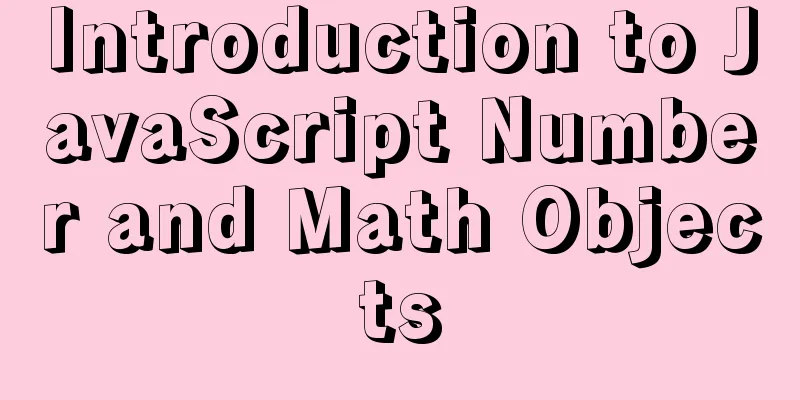Theory: The two years of user experience

|
<br />It has been no more than two years since domestic websites became truly popular and focused on user experience. I believe that the research experience of most practitioners is limited to this period. The difference is that the understanding of new concepts is affected by the foundation and individual differences. My experience can be described from two aspects: Concept understanding: User experience - User-centered - Interaction design - Information architecture Practice: Goal - Process - Method - Deliverable - Product management In early 2005, I first saw the term “user experience” in UIGarden, which was linked to in Google search results. My real feeling at that time was that someone finally cared about us as Internet users. What I want to do most is to bring over the designers of the websites I often visit and give them a beating. To date, "user experience" is still the hottest buzzword. The main reason is that this word is popular and catchy, and as long as you say it with a serious expression, you will look very professional (it has been proven time and time again), and there are absolutely no logical errors to be found. In fact, it is a typical example of something that seems earth-shattering, but upon closer examination it turns out to be saying nothing. With all these questions, I began to try to understand our users and try to be "user-centric". Although I don’t know who the users are, there is a basic principle: I am an Internet user. If I am not satisfied myself, how can I satisfy my users? I also met my old friends Bai Ya and Chou Yu during this period. At that time, there were very few people who could share the same writing skills as me. When we got together, apart from complaining, we spent more time expressing our feelings. Soon, I discovered that for the operational-level user experience, most users have the same feelings, which is about "avoiding trouble and creating convenience". Later I learned that this discipline is called "interaction design". So, guided by the idea of interaction, I did a lot of homework, because I had to understand why the experience was good this way? If you go deeper from one point, you can pull out a lot of things. Interaction obviously requires at least two objects, and I like to use the word "round" to quantify it. For example, I touch a link with my mouse and its underline disappears. The concept of this round is that I say hello and others respond. We all know that the most hateful thing when two people are dating is not expressing one's opinion. If one does not respond, there will be no flaws. Perhaps most practitioners understand user experience through the concept of "interaction design". Moreover, among the relevant professional books popular in China, interactive design accounts for the highest proportion and quality, such as the heavyweight authoritative works such as "About Face". But after several stages of practice, I gradually discovered that interaction design cannot solve all problems. For example, when designing a classification operation mode, the interaction is actually very simple, but the real difficulty lies in what to use for the interaction? How to deal with the relationship between them? In early 2006, I accidentally wrote an article about Yahoo!'s project workflow to introduce the European process, and the response from my peers was surprisingly strong. Because before this, everyone's awareness was basically limited to the distinction between the front-end and back-end of the website. If we look more closely, the front-end is also divided into structure, performance, and behavior, but none of them rose to the level of products, that is to say, there was no systematic theory to support it. It was also during this Yahoo! Europe process that I noticed and realized the importance of "information architecture". After consulting a lot of information, I wrote an article on the website’s information architecture in May to illustrate my point of view, but I still don’t know how to implement the ideas of this comprehensive discipline into product concepts, and how to collaborate and iterate with interactions? How to present? What follows is a long process of practice, optimizing methods and improving efficiency. Reading books not only allows you to see the world, but more importantly, it helps you verify your own ideas. While resonating with the author, think clearly about why. For example, the book "Elements of User Experience" I read recently mainly clarified my understanding of the structural layer, and the framework layer was almost a reconstruction of the knowledge structure. My previous understanding was too superficial and scattered. It was once envisioned that some kind of product documentation would be used to ensure design implementation throughout the product-centric development model. Because no matter information architecture or interaction design, the results will be implemented in deliverables, otherwise the design results cannot be communicated to others, which means that the work cannot be quantified. There is no high or low in linear processes. Demonstrating your own value does not mean denying the work results of others, because we are a team. You may not know your strengths, but you must understand what you are best suited for. By the same token, to understand a concept one should not try to expand a point as much as possible, but rather figure out the position of this point in the whole. The prejudice against SEO and the suspicion against interactive design all originated from this. Accurate positioning is conducive to correct understanding and division of labor and collaboration. Finally, going back to the discussion of "Website Reconstruction" in 2004, the full compatibility and accessibility advocated by Web Standards is actually an implementation of the user-centered idea, and also pays attention to user experience. Similar topics have been around for a long time, but none of us have fully understood them. |
<<: How many times will multiple setStates in React be called?
>>: Some notes on installing fastdfs image in docker
Recommend
Learn Hyperlink A Tag
ask: I have styled the hyperlink using CSS, but i...
Use pure CSS to disable the a tag in HTML without JavaScript
In fact, this problem has already popped up when I...
Mysql example of querying all lower-level multi-level sub-departments based on a certain department ID
Simulation tables and data scripts Copy the follo...
Two ways to introduce svg icons in Vue
How to introduce svg icons in Vue Method 1 of int...
Installation steps of docker-ce on Raspberry Pi 4b ubuntu19 server
The Raspberry Pi model is 4b, 1G RAM. The system ...
MySQL 5.7.13 installation and configuration method graphic tutorial (win10 64 bit)
This article shares with you the graphic tutorial...
Introduction to the use of select optgroup tag in html
Occasionally, I need to group select contents. In ...
Teach you how to monitor Tomcat's JVM memory through JConsoler
Table of contents 1. How to monitor Tomcat 2. Jav...
HTML mouse css control
Generally speaking, the mouse is displayed as an u...
Node.js uses express-fileupload middleware to upload files
Table of contents Initialize the project Writing ...
Setting up shared folders in Ubuntu virtual machine of VMWare14.0.0
This is my first blog post. Due to time constrain...
8 Reasons Why You Should Use Xfce Desktop Environment for Linux
For several reasons (including curiosity), I star...
How to modify the default network segment of Docker0 bridge in Docker
1. Background When the Docker service is started,...
MySQL sequence AUTO_INCREMENT detailed explanation and example code
MySQL sequence AUTO_INCREMENT detailed explanatio...
Use vue3 to implement a human-cat communication applet
Table of contents Preface Initialize the project ...









